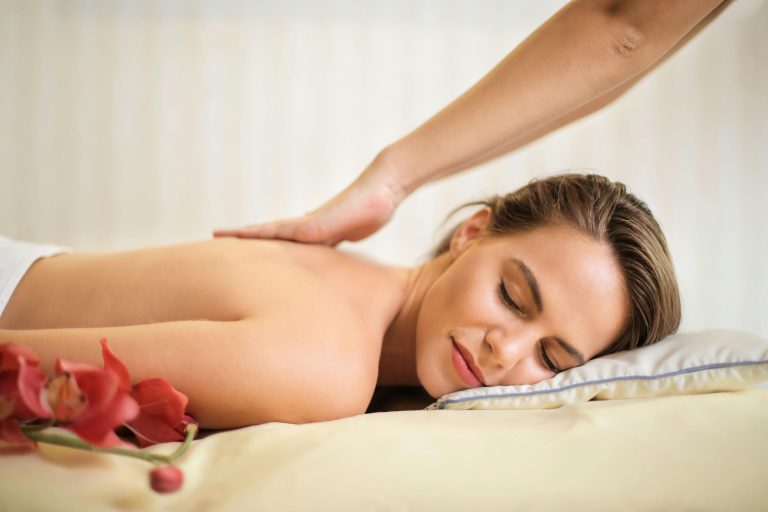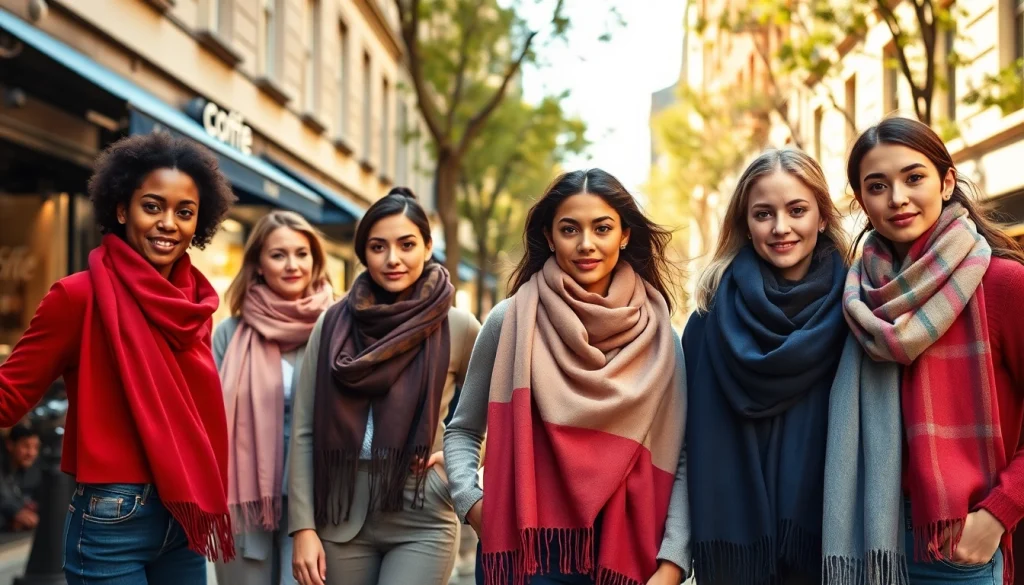Understanding the Variety of Scarves for Women
Types of Scarves: Pashmina, Silk, and More
Scarves have long been a staple accessory in women’s fashion, serving both functional and decorative purposes. Among the broad categories of scarves available, specific types stand out for their unique properties and use cases. Pashmina, silk, wool, and cotton are the most popular fabrics, each providing different textures, warmth levels, and styling possibilities.
Pashmina scarves are favored for their soft texture and ability to retain warmth without being bulky. Originating from the Himalayan region, Pashmina wool is derived from the undercoat of the Changthangi goat, making it both luxurious and incredibly warm. Silk scarves, on the other hand, offer a light and elegant finish, perfect for elevating an outfit or adding a splash of color. Silk drapes beautifully and can be styled in numerous ways, whether tied around the neck or used as a hair accessory.
Wool scarves are ideal for colder months, providing excellent warmth and comfort. These can come in various styles, from chunky knits to fine weaves. In contrast, cotton scarves are lightweight and breathable, making them suitable for casual wear or the warmer seasons. Their versatility allows them to be worn as wraps, headscarves, or even around the waist as a summer accessory. With so many options available, scarves for women can be tailored to both personal style and seasonal needs.
Choosing the Right Fabric for Different Seasons
Understanding the intricacies of fabric types is essential when selecting scarves for different seasons. In the colder seasons, heavier fabrics like wool and Pashmina provide the necessary warmth. They can be layered under coats or worn prominently for added style. Wool is breathable yet insulating, making it an excellent choice for winter wear.
As temperatures rise, lighter fabrics become more appealing. Silk and cotton scarves not only provide a fashion statement but also serve as protective layers against the sun. A silk scarf can elegantly complement a sundress, while a cotton scarf can add a playful touch to a casual outfit.
For transitional weather, it’s wise to have a mix of medium-weight scarves. These can often be blended fabrics, merging cotton with silk or wool with cashmere. Such versatile scarves enable layering and easy style transitions from day to night or from cooler mornings to warmer afternoons.
How Scarves Can Transform Your Look
One of the most powerful attributes of scarves is their ability to transform an outfit instantly. A simple outfit of jeans and a white T-shirt can be elevated to chic, sophisticated looks just by adding scarves. Depending on the style, color, and fabric, a scarf can serve as a focal point, draw attention to your face, or add visual interest to a basic ensemble.
Wearing a bold, patterned scarf can signify confidence and creativity, while a classic monochrome wrap can demurely add refinement. Scarves can also bridge gaps in outfits, serving as a coherent element that ties various colors or styles together. They can be styled in numerous ways, including tied around the neck, wrapped around the head, or draped over the shoulders, thereby allowing personal expression in fashion.
Furthermore, scarves can be used to embrace trends, making them a cost-effective way to stay fashionable without overhauling your wardrobe. Scarves act not only as accessories but also as essential components that enhance and reflect an individual’s unique style.
Styling Tips for Scarves for Women
Layering Techniques for Different Outfits
Layering is an art when it comes to styling scarves. Knowing how to layer them can drastically elevate your style game. For instance, using a thinner, longer scarf can enhance a casual look without adding bulk. Simply draping it around your neck and letting the ends hang down can create a casual yet polished look. Alternatively, wrapping a thicker scarf snugly around your neck can provide warmth while making a bold statement.
Another effective layering technique is to combine scarves with other accessories. Consider pairing a knitted scarf with a leather jacket and tailored trousers for a blend of effortless chic. In spring and summer, lightweight scarves can be layered with denim jackets or blazers to achieve a fashionable look without compromising comfort.
Color Coordination: Matching Scarves with Attire
Color coordination is a critical aspect of scarf styling. When you choose a scarf, consider the color palette of your outfit. A well-coordinated scarf can tie your ensemble together and enhance your overall appearance. For neutral outfits, a vibrant and colorful scarf can add a focal point and bring life to the look.
Conversely, when wearing bold colors or patterns, opt for scarves that are more subdued to create balance. The key is to find harmony between the scarf and the attire, ensuring that neither overshadows the other. Layering a patterned scarf over a solid outfit, or vice versa, can create visual interest while maintaining elegance.
Using classic color combinations also serves as an inspiring methodology for styling. Pairing a red scarf with a teal dress or a mustard scarf with a navy coat are examples of striking contrasts that can make an outfit memorable.
Accessorizing with Scarves: Beyond the Neck
Scarves are incredibly versatile accessories that can be utilized beyond just wearing them around the neck. One creative approach is to use scarves to accessorize hairstyles. A silk scarf can be tied around a bun or ponytail, adding flair and sophistication. This technique not only enhances your hairstyle but also introduces a pop of color or pattern to your overall appearance.
Additionally, scarves can be used as belts or bag embellishments. Simply tying a longer scarf around your waist can create a trendy, bohemian vibe that cinches the waist. Alternatively, wrapping a scarf around the handle of a handbag can transform an ordinary bag into something special.
Thinking outside the box with scarves allows for more innovative fashion statements and encourages personal creativity in styling, making scarves a must-have accessory for women of all styles.
Functionality and Versatility of Scarves for Women
Scarves as Seasonal Accessories
The functionality of scarves extends beyond aesthetics; they serve vital roles across various seasons. In winter, scarves provide warmth and protection against the chill. They can be layered under coats or worn outside to shield from winds. In transition seasons like autumn and spring, lighter scarves ensure comfort during fluctuating temperatures.
During summer, scarves can protect against UV rays while offering a stylish flair. Scarves can double as wraps or shawls during outdoor events, providing comfort during breezy evenings. They offer a level of protection without the bulk of a jacket, making them essential in any seasonal wardrobe.
Using Scarves for Functionality in Daily Life
In addition to their aesthetic value, scarves serve practical functions in daily life. Whether shielding oneself from the sun or adding layers for warmth, scarves provide comfort in changing weather conditions. They can be used efficiently in public transit, as a handy cover-up or to increase warmth without sacrificing style.
Scarves offer portability; they are easy to carry in a purse or bag for unexpected weather changes. Keeping a lightweight cotton or silk scarf on hand can help adapt to any spontaneous changes in temperature or style during outings.
The multifunctionality of scarves is evident in their ability to serve as a travel essential. A large scarf can even transform into a makeshift blanket during chilly flights or layovers, adding practicality while on the go.
Statement Pieces: Making Scarves a Focal Point
Scarves are not only accessories; they can also serve as statement pieces. A boldly patterned or brightly colored scarf can act as the centerpiece of an outfit, drawing attention and sparking conversation. When styled correctly, they can elevate a simple outfit into a fashionable ensemble.
Creating an outfit around a statement scarf can be both creative and rewarding. Choose complementary colors in your outfit and allow the scarf to take the lead. By allowing a scarf to anchor your look, you bring a layer of depth and interest to traditional outfits.
Shopping for Scarves for Women
Where to Buy: Online vs. In-store
When it comes to purchasing scarves for women, both online and in-store shopping have their unique advantages. Shopping online offers the convenience of browsing a vast selection from the comfort of your home. You can compare prices, read reviews, and explore styles from brands worldwide without geographical limits. Additionally, online shopping often grants access to exclusive collections and sales.
However, in-store shopping has its own merits. Visiting a physical store allows you to feel the fabric, observe colors in natural lighting, and see how styles move. Trying scarves on with different outfits can also help you visualize how they will fit into your existing wardrobe, ensuring you find the perfect accessory.
Ultimately, the choice between online and in-store shopping may vary depending on personal preferences, familiarity with sizing, and access to stores in your location.
Price Ranges: Affordable to Luxury Options
The price of scarves can greatly vary, catering to diverse budgets and preferences. From affordable options at fast fashion retailers to luxurious designer scarves, women have a range of choices depending on their style needs and financial plans. Understanding these price ranges allows shoppers to make informed decisions while exploring products.
Affordable scarves can often be found in mainstream retail chains, with prices reflecting seasonal trends without a hefty price tag. Mid-range scarves typically offer better quality and unique designs, with prices falling between $30 to $100. These can be found at specialty stores or boutiques.
Luxury scarves, often made of high-quality materials like silk, cashmere, or designer fabrics, can range from several hundred to thousands of dollars, depending on the brand and design. Shopping for scarves should be a blend of personal taste and budget, balancing the desire for quality with affordability.
What to Look for When Shopping for Scarves
When purchasing scarves for women, several key factors should guide your shopping experience. First and foremost, consider the material. Different fabrics offer various textures and functions. Carefully feeling the fabric can contribute to satisfaction, as well as ensuring comfort when worn for extended periods.
Secondly, pay attention to the size and shape of the scarf. Long, rectangular scarves may offer more styling versatility than square scarves, which can be tied in creative ways. Ensure that the scarf complements your typical attire, enabling seamless integration with your existing wardrobe.
Lastly, evaluate the design and pattern. Classic, versatile designs are ideal for longevity, while trendy styles may offer temporary excitement. Selecting scarves that align with personal style while providing a range of styling options can result in enhanced satisfaction with your purchase.
Caring for Your Scarves for Women
Cleaning and Maintenance Tips for Different Fabrics
The longevity of any scarf hinges on proper care and maintenance. This process varies depending on the fabric. For delicate materials like silk or cashmere, spot cleaning and gentle washing are recommended. When treating stains, it is essential to use mild soap and lukewarm water to avoid damaging the fibers.
Pashmina and wool scarves may require hand washing or professional dry cleaning to maintain their integrity. Always follow the care label instructions to prevent pilling or shrinkage. For cotton scarves, machine washing on a gentle cycle is often acceptable, adding to their ease of maintenance.
Storage Solutions to Preserve Quality
Proper storage is vital to preserving both the quality and appearance of scarves. To prevent creasing or damaging the fabric, avoid hanging heavier scarves, as this can stretch the fibers over time. Instead, consider folding them neatly and storing them in a drawer or on a shelf.
For delicate fabrics like silk, rolling the scarf can help prevent creasing and keep them organized. Alternatively, using scarf hangers or decorative boxes can not only protect your collection but also transform them into an aesthetic display.
Seasonal Rotation: Keeping Your Collection Fresh
Just as with any accessory, rotating your scarf collection seasonally can keep your looks fresh and functional. During winter, prioritize warmer materials and richer colors. As spring approaches, shift towards lighter fabrics and pastel hues. Summer calls for vibrant patterns and lightweight cottons, while autumn welcomes warmer tones with textured fabrics.
Regular rotation not only promotes creativity in outfit styling but also maintains the quality of the scarves by reducing prolonged exposure to sunlight or humidity, which can deteriorate fabric over time.





